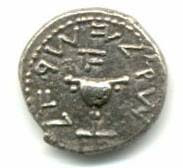We left the Israel Air Force Museum and headed north. I could have spent a lot more time there and taken even more pictures but, I was overruled.
We drove north towards Tel Aviv, stopping at Rehovot and headed to the Ayalon Institute.
The institute was located on a Kibbutz during the British mandate period. Most of the Kibbutz residents and workers did not know about the existence of the factory and had been told the 45 volunteers who operated it spent their days working in other farmers' fields.
A pretty standard kibbutz, it was mainly focused on agriculture, had a nice bakery and cafe and a large and rather noisy laundry facility.
And under the laundry facility when you moved a machine aside...
And in the bakery when you moved a 10 ton oven aside...
You had the secret entrances to the Ayalon Institute - the bullet factory. We headed on down to explore.
The factory was located a short walking distance from a British military base, and British soldiers often bought bread and had refreshments at the bakery while the bullets were being produced underneath their feet. It was completed and up and running in just 21 days.
The bullet factory manufactured 9mm ammunition for use in STEN guns that were built elsewhere. Ironically enough, the bullect manufacturing machinery smuggled in from Poland was of German manufacture.
9mm casings were punched out of sheets of brass, stretched and formed to size.
Bullets and primers were also manufactured at the institute.
The cartridges were assembled on presses that most reloaders would recognize.
They were then tested, at the same time when a train came by each day to hide the noise, as often the gun powder smuggled into the facility was not of the best quality:
Then they were smuggled out to where they would do some good.
The workers instead of working in the fields would be rather pale from working underground, so to maintain their cover story, a tanning facility was made part of the underground facility:
Over 2 million bullets were produced at the factory at a maximum capacity of 40,000 per day, from 1945 through 1948, providing vital ammunition that was critically needed in the early days of the War for Independence.














4 comments:
Interesting side trip. And not the first one of those I've heard of!
So a CARTRIDGE factory....
Hey Aaron;
That is pretty neat. It shows how the people planned in advance how to equip themselves, and formed the basis for the domestic arms industry.
Gee, it's almost like, no matter how one tries to control guns, you just can't stop the signal...
Thanks for sharing this adventure with us.
Post a Comment